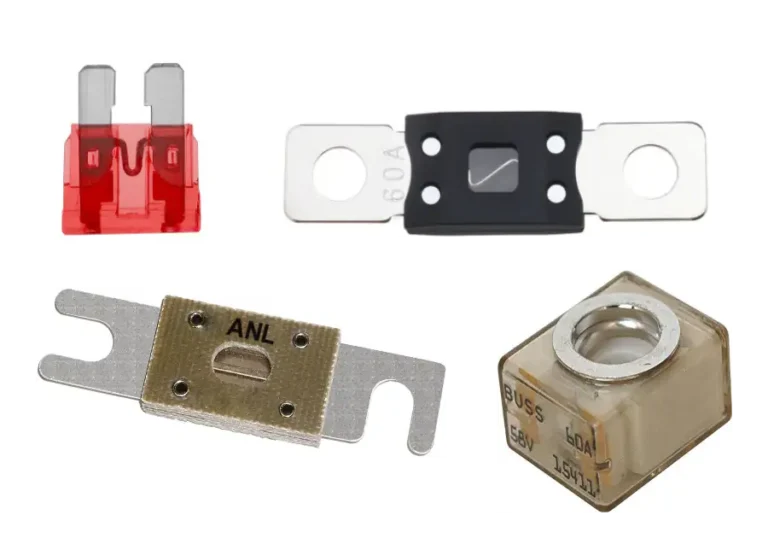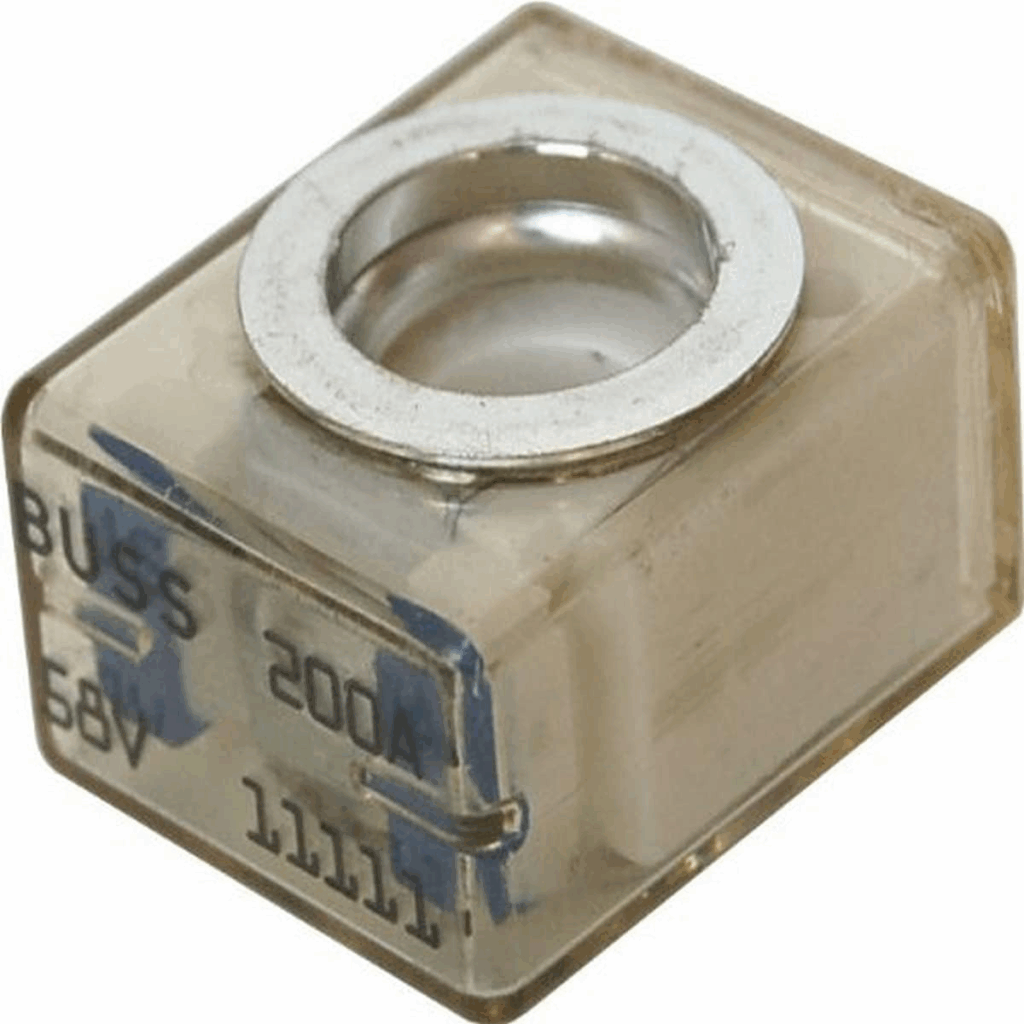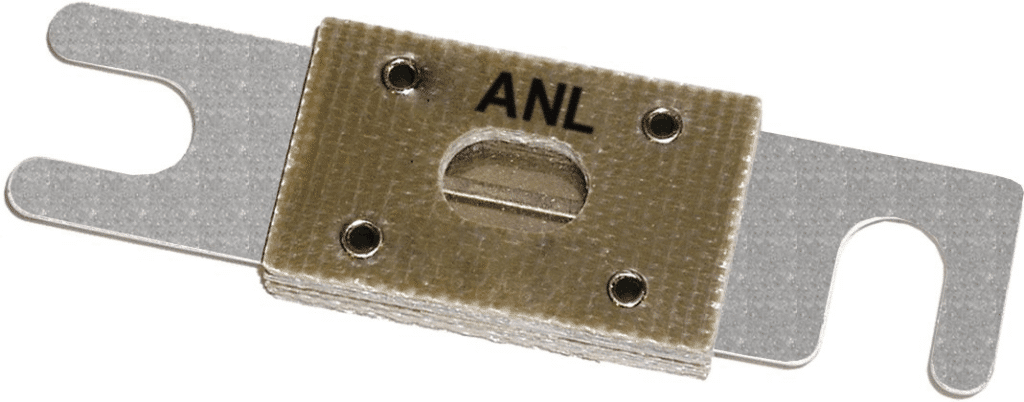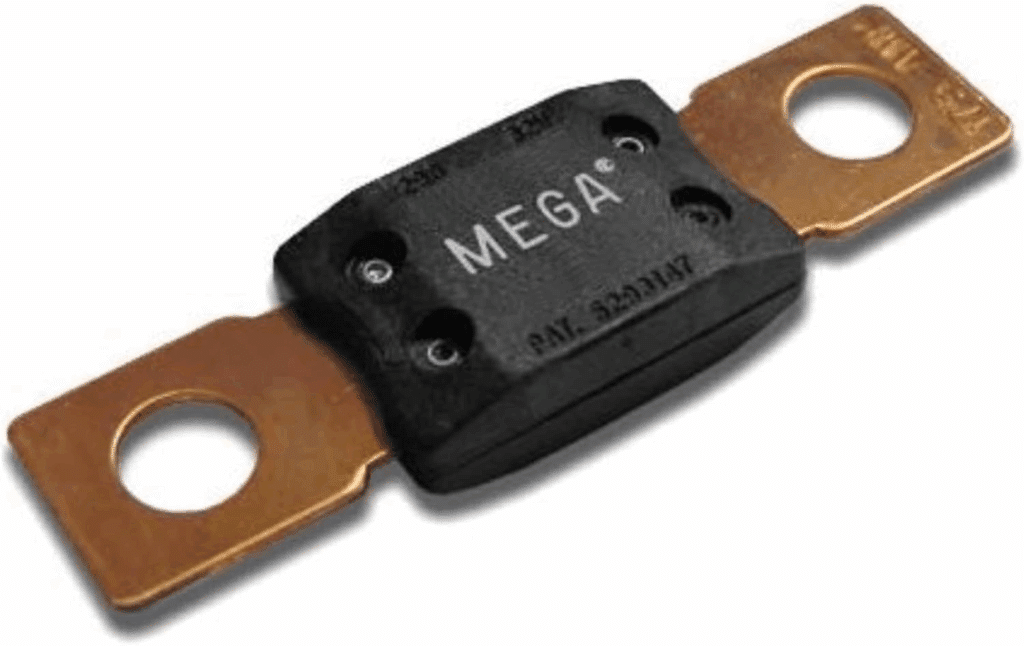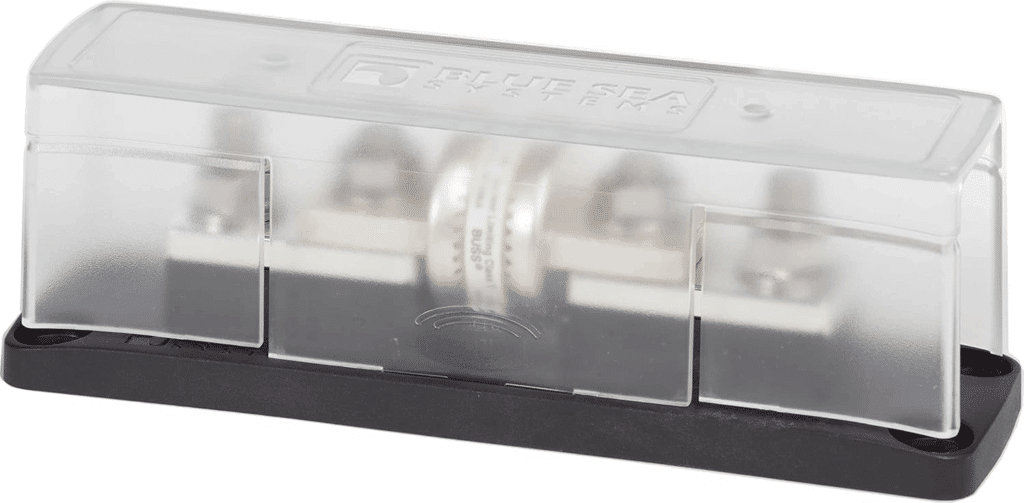Fuses for boats, and fusing marine electrical and electronic systems can be a puzzle for many boaters. This article is a gentle introduction to the subject of fusing.
What is a fuse? (Explained like you’re five)
Think of electricity like cars driving on a three‑lane road that narrows down to one lane. A fuse is a small, weak section of that road made to carry only a certain number of cars. If too many cars try to go through the narrow part, that little section gets too hot and breaks. When it breaks, the road is blocked and the cars stop — that keeps the rest of the road from getting damaged.
In simple terms, a fuse is a thin piece of wire that’s made to carry a set number of Amps (Amps tell us how much electricity is flowing). If more Amps flow than the fuse can handle, the wire heats up and melts, so the electricity stops — just like the broken section of road stopping the cars. After the problem is fixed, the broken fuse is replaced, and the circuit works again.
Why Fuses are Especially Important on Boats
Understanding Fuses for Boats
Other than the normal uses for fuses, to protect cables from overload and potential fires. Boats are full of metal, machinery, tight spaces, moisture, fuel and vibration; all of which can lead to cable damage, causing a potentially dangerous situation. Besides those factors, you are often a long way from help or rescue so preventative safety features are vital. If a wire shorts or a device draws too much current, heat builds quickly, and a fire can start. A properly chosen fuse isolates the problem fast, limiting damage and risk. Fuses are inexpensive, predictable, and simple to replace — they’re the frontline safety device in any boat electrical system.
The two primary uses for fuses
Fuses are used primarily for two purposes:
- To protect the cables and switching that make up distribution circuits, battery fuses, fuses in switchboards, etc..
- To protect electronic devices attached to circuits (these fuses are usually mounted on the back of the equipment’s case). The circuit supplying one or more items of equipment will be able to support a higher current than the items of equipment require. In the event of an internal fault in the equipment causing a high current draw, the internal fuse will blow, protecting the equipment from further damage and avoiding blowing the fuse at the switchboard, thereby protecting other equipment from being shut down.
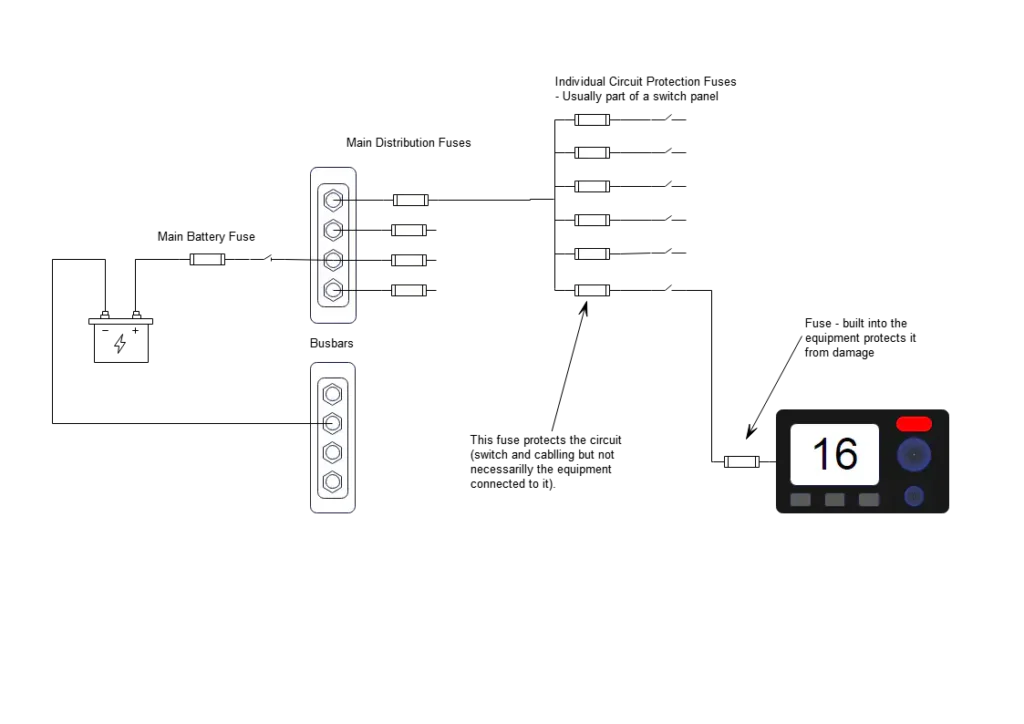
Types of Fuses
Here’s a practical rundown of common fuse types you’ll encounter on boats, with quick notes on their use.
Blade fuses (ATO/ATC/mini/micro)

- Use: small DC circuits, instruments, and accessory panels.
- Pros: cheap, widely available, easy to swap.
- Cons: Most are not waterproof unless used in sealed holders or mounted in marine-grade fuse blocks.
MRBF – (Marine-Rated Battery Fuse)
In terms of mounting distance from the battery terminal, these are good as you can get as they can be mounted directly on the battery terminal.
- Use: marine panels and busbar-mounted branch protection where blade-style fuses are desired but marine-grade construction is needed.
- Pros: designed for marine environments (corrosion resistance, secure mounting), often used in conjunction with dedicated marine fuse blocks.
- Cons: system-specific; check compatibility with your panel or block.
Get MRBF fuse terminals on Amazon
ANL fuses
- Use: medium to high-current main lines (40–300 A), battery banks, alternator feeds.
- Pros: robust, simple inline holders, good heat handling for trunk cables.
- Cons: requires a dedicated holder and space; not a panel-mounted solution.
GET ANL fuse holders from Amazon
MEGA fuses / bolt-down blade fuses
- Use: very high-current battery protection for starters and large inverters.
- Pros: compact and secure bolted terminals; handle very high amps.
- Cons: need proper lugs and mounting points.
Get MEGA fuse holders on Amazon
Class T fuses (high-performance DC)
- Use: inverter input protection, battery bank systems where fast interruption and compact size are needed.
- Pros: excellent interrupt capability, compact, handle severe short-circuit conditions.
- Cons: more costly; must match inverter and cable specifications.
Get Class T fuse holders on Amazon
Glass cartridge and ceramic fuses (AGC, etc.)
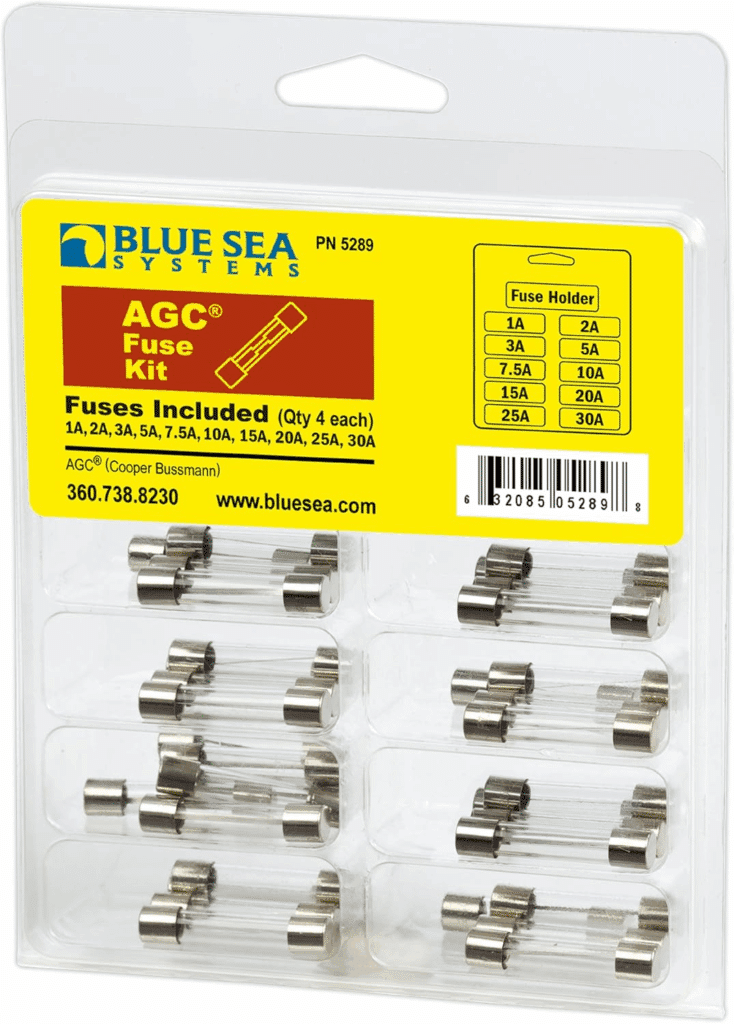
- Use: older equipment, small appliance circuits.
- Pros: available in fast-acting and slow-blow; inexpensive.
- Cons: glass ones can shatter in rough conditions (high vibration or shock) — choose ceramic or enclosed holders for marine use.
- Time-delay (slow-blow) vs. fast-acting
- Slow-blow: for motors and devices with inrush. They tolerate short surges without blowing.
- Fast-acting: for sensitive electronics that must be isolated quickly.
Other classes of fuses
There are many types of fuses, far too many to cover in an introductory article like this, but there is one more class of fuse that you should at least be aware of, and that is the Slow-Blow or HRC type fuses. These are designed to protect equipment or circuits that may carry an initial very high current as the device starts, but then settle to a much lower operating current.
Typically, motors fall into this category, but other systems, such as older RADARs may also require special classes of fuse. If you are unsure, consult the manual.
Further information and Fuse sizing
For more information on fuse size selection, see our other articles:
Master the Boat Wiring Diagram
FAQ
Frequently Asked Questions
What are marine fuses and why are they important?
Marine fuses are safety devices designed to protect electrical circuits on boats from overloads and short circuits, ensuring the safe operation of electrical and electronic systems.
How do I choose the right fuse for my boat?
Selecting the right fuse involves considering the electrical load of the device, the voltage of the system, and following manufacturer recommendations to ensure optimal protection.
What types of fuses are commonly used in marine applications?
Common types of fuses used in marine applications include blade fuses, glass tube fuses, and resettable circuit breakers, each suited for different electrical systems and environments.
How often should I check or replace fuses on my boat?
It is advisable to regularly inspect fuses for signs of damage or corrosion and replace them as needed to maintain the reliability of your marine electrical systems.
What are the signs of a blown fuse in a marine system?
Signs of a blown fuse may include malfunctioning electrical devices, loss of power to certain circuits, or visible damage to the fuse itself.
Can I use standard automotive fuses on my boat?
While some automotive fuses may be compatible, it is recommended to use marine-grade fuses specifically designed to withstand the harsher conditions of a marine environment for enhanced safety and reliability.
